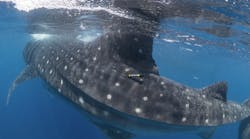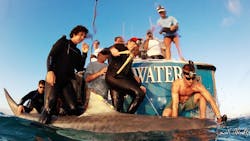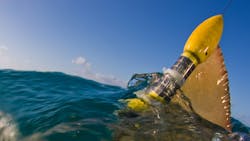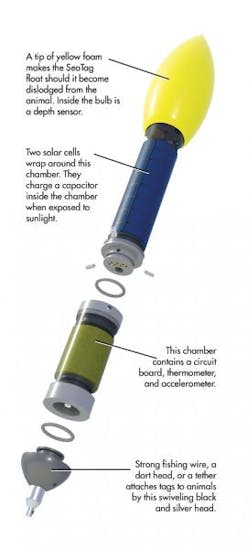New animal-tracking tags cast from 3D-printed molds conform better to sea creatures’ bodies. Three-dimensional printing makes the complex organic shapes no costlier to manufacture than tags with plain geometries.
Desert Star Systems, Marina, Calif., designs and manufactures tracking tags for sea creatures. The design process behind these tags is expensive because only experts can attach prototypes being evaluated to animals. And once installed, tags must weather punishing ocean environments and cannot be recalled for troubleshooting.
Additive manufacturer ZoomRP, a division of Solid Concepts, Valencia, Calif., helps Desert Star reduce prototyping costs and quickly customize tags to specific animals. Additive manufacturing also eliminated the need for heavy upfront investment and leftover inventory when the tags undergo redesign.Molds are made with two additive-manufacturing processes: stereolithography (SLA) and the PolyJet process. Then Desert Star’s SeaTags are cast inside these molds. In SLA, an ultraviolet laser cures designs layer by layer from a vat of photocurable resin. In the PolyJet process, a print head simultaneously lays and cures a resin to build parts.
Desert Star slowly casts the SeaTags in epoxy and cures them over 24 hr so the two circuit boards embedded in the polymer don’t melt. (One circuit board houses a magnetometer, accelerometer, micro-SD card, and thermometer, while the other holds the transmitter that sends sensor data to the ARGOS satellite.)
Ribs support delicate features until the epoxy fully hardens. Technicians remove the ribs during postprocessing.
After curing, portions of the tags are wrapped in thin solar cells. The cells outperform batteries (which tend to be bulky) and traditional photovoltaics (which make electricity only from abundant solar radiation — in short supply underwater.) The thin-film cells collect sunlight for power and use it to charge a capacitor, which powers the tag’s other subcomponents.
“Fifteen minutes of sunlight fully charges the unit, and then the tag can operate up to two weeks in total darkness,” says Marco Flagg, chief engineer at Desert Star Systems.
Some traditional tags use solar cells to make power and report location (in terms of longitude and latitude). In contrast, SeaTags mostly rely on magnetometers for positioning.
A three-axis magnetometer detects the intensity and direction of Earth’s magnetic field transmitted through basalt on the ocean floor. Then the sensor converts the signals into position data and sends them to ARGOS. The inspiration for using magnetics comes from sea turtles and hammerhead sharks. It’s hypothesized that these animals rely on magnetics to migrate and find food.
SeaTags are helping researchers on the RJ Dunlap Marine Conservation Program, Miami. They document the lives of sharks, including their feeding patterns and where they mate and give birth.
Make a difference and adopt a shark.




